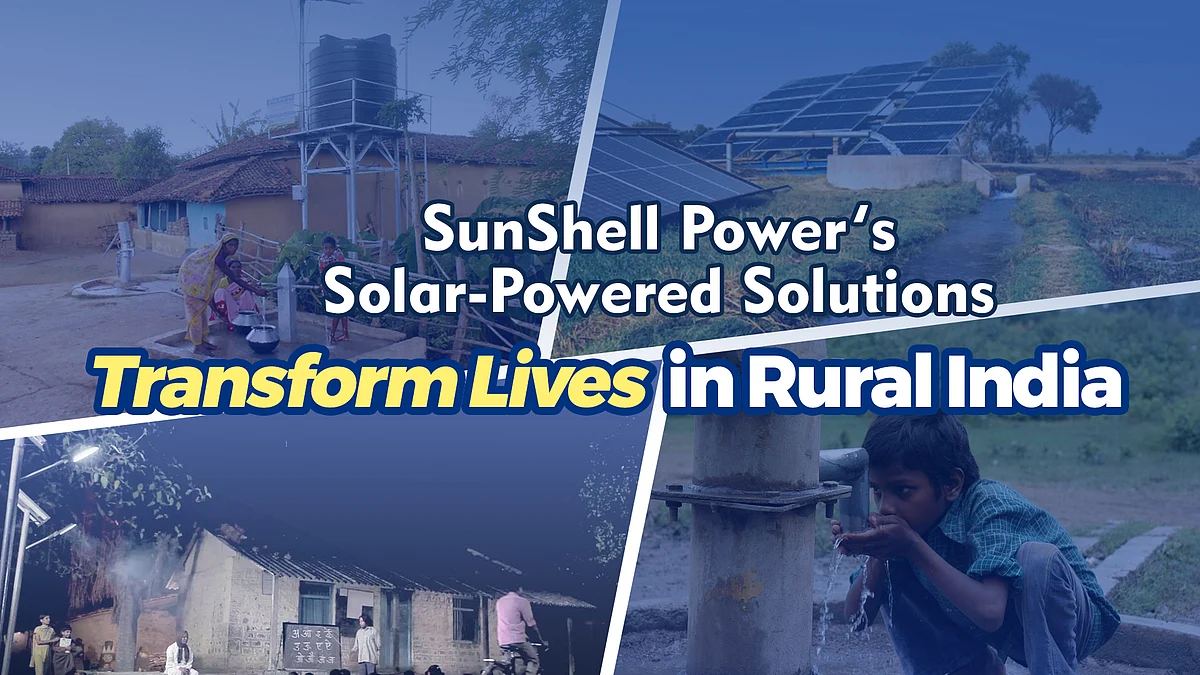Sunshell Power’s Solar-Powered Solutions Transform Lives in Rural India
Some stories from rural India that highlight the potential of solar energy to address fundamental human needs.

advertisement
In rural India, where access to clean water and reliable electricity has long been a challenge, transformative changes are taking root, bringing hope to underserved communities. Solar-powered solutions, spearheaded by innovative initiatives, are reshaping lives in ways that go beyond just technology.
Clean Water for Healthier Lives
In Jalpaiguri, a small Net Zero Solar Pump House has quietly revolutionized daily life for over 3,000 residents. For decades, the community depended on outdated and inefficient systems for water, often facing shortages and environmental concerns. Today, this solar-powered pump house ensures a steady supply of clean drinking water, improving not just access but also health outcomes by eliminating reliance on contaminated sources.
A similar story is unfolding in Burdhaman village, where a 2HP solar water pumping system has brought relief to 150 families. Once forced to walk over five kilometers to fetch water, residents now have access to safe drinking water close to their homes. This small yet impactful change has saved hours of labor, particularly for women and children, allowing them to focus on education and livelihoods.
In Bankura and Midnapore, solar-powered RO water systems are being installed in schools and primary health centers. These systems, capable of producing 1,000 liters of clean water every hour, not only serve institutional needs but also extend their benefits to neighboring communities. By preventing waterborne diseases, they are quietly improving health and reducing the strain on local healthcare systems.
A Boost for Agriculture
Farmers in Coochbehar have also seen the benefits of solar technology. In a region heavily reliant on diesel-powered pumps, a new river-lifting sprinkler micro-irrigation project is showing how clean energy can drive agricultural growth. Over 200 farmers now have access to solar-powered irrigation, which has boosted crop yields while cutting fuel costs and emissions.
One farmer shared, “The solar pump has been a blessing. Not only is it cheaper than diesel, but it also runs without fail. This has allowed us to cultivate more land and grow better crops.”
Safer Nights with Solar Streetlights
In towns like Bardhaman, Jalpaiguri, and Asansol, solar streetlights are transforming public spaces. Over 3,500 lights have been installed, illuminating roads and reducing nighttime accidents. For many women, this newfound visibility has brought a sense of safety and freedom.
“We used to avoid walking outside after dark, but now the streets are well-lit. It feels much safer,” said a resident of Bardhaman.
Beyond safety, these lights have brought a sense of dignity to public spaces, encouraging greater community interactions after sunset.
A Model for Sustainable Development
What makes these projects remarkable isn’t just the technology—it’s their ripple effect on communities. By replacing diesel pumps and conventional systems with solar-powered alternatives, emissions have been significantly reduced. But perhaps more importantly, these initiatives have empowered people to live healthier, safer, and more productive lives.
These stories from rural India highlight the potential of solar energy to address fundamental human needs. With more projects like these in the pipeline, the hope is to see an even greater transformation in the years to come.
As one beneficiary summed it up, “This isn’t just about solar panels or clean energy. It’s about giving us the tools to build a better future for ourselves.”
Through such grassroots efforts, clean energy is no longer a distant concept but a tangible reality making a difference, one community at a time.